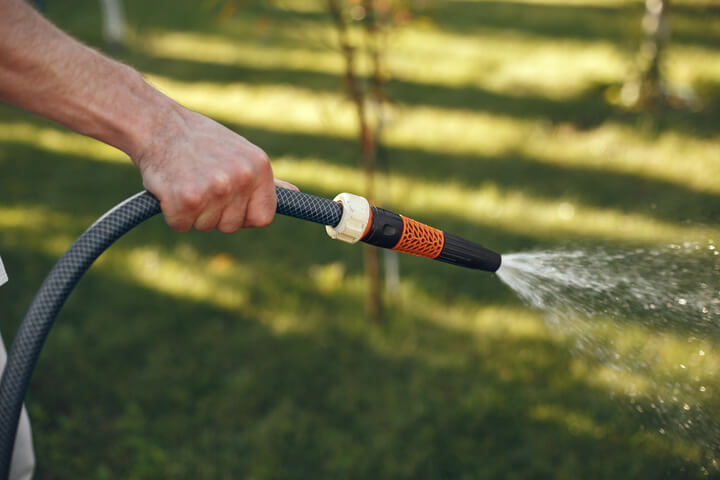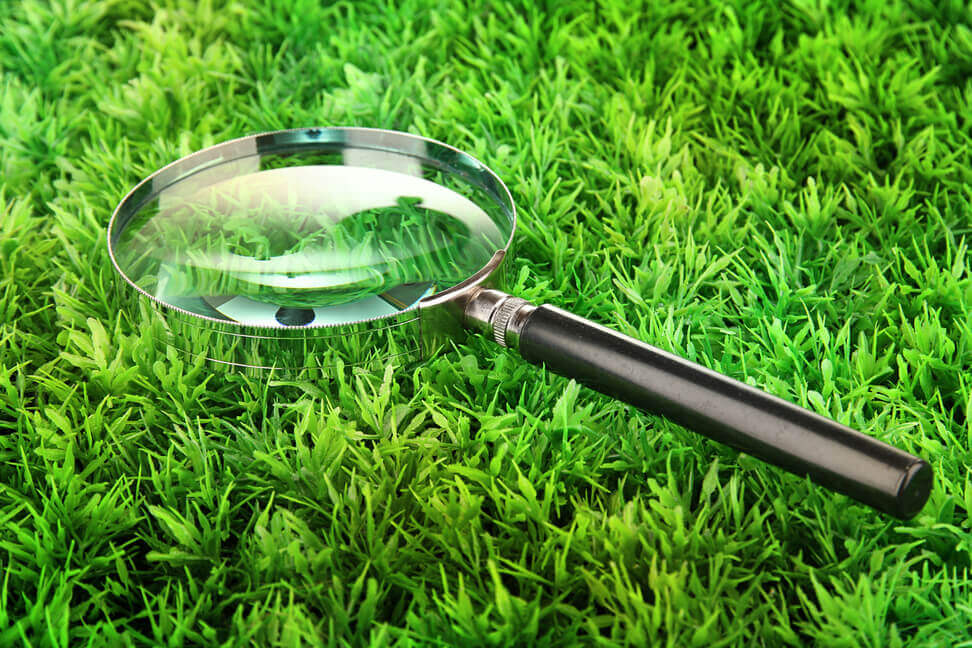Allen Turf Care
Artificial Turf Maintenance & Cleaning
There are a lot of myths surrounding artificial turf. One of those myths is that it requires no maintenance at all. However, there are still steps that you should take to keep your artificial turf healthy and looking great.
You'll spend more time enjoying your yard than maintaining it, but investing a little time now will save you lots of time later. Artificial turf maintenance is quick, simple, and takes significantly less time than a natural grass lawn!
A properly maintained artificial turf lawn looks great year-round. You won't have to worry about weeds, pests, or other natural grass problems. With proper artificial turf maintenance, you can expect your lawn to look beautiful for years to come.

What Tools Are Required for Artificial Grass Maintenance?
There are several tools required for maintaining your artificial grass. You'll need a leaf blower, a garden hose, a hose attachment, a push broom, and a rake. These tools will help you clean your turf and keep it looking great throughout the season.
Routine Artificial Turf Maintenance & Cleaning
While artificial turf doesn't require the same daily rigor that other household spaces do for maintenance and cleaning, there are still a few basic steps that you'll want to include in your routine.
For starters, a leaf blower can remove organic material from surfaces. A soft-tipped rake is great for removing larger debris. You may also want to invest in a vacuum cleaner if you struggle to clean certain parts of your lawn. You'll also want to consider the environment where your turf is installed and the overall traffic/use of your yard. These two factors will determine how often you should perform routine maintenance and cleaning.
Pets, kids, trees, climate, and other factors should be considered when deciding how often or how little to practice these routines.
Daily Maintenance
Turf is a great investment because it saves water, reduces maintenance costs, and improves curb appeal. However, routine artificial turf cleaning is essential to keep your turf looking its best. If you neglect daily maintenance, your turf will become dirty and unsightly. This will reduce the value of your property and lower the chances of selling. Daily routine maintenance includes cleaning, vacuuming, sweeping, mopping, and applying fertilizer. Use a soft brush to remove dirt and debris and clean your turf. Then apply a quality sealant to protect against stains and fading. Finally, sweep away any loose leaves and debris.
Weekly Maintenance
The weather and season will determine what weekly artificial grass maintenance you need. In Texas, cities like Allen face more humidity and frequent storms, while homes in the Dallas, Austin, Fort Worth, and San Antonio areas may require attention to extreme heat. Rainwater can serve as the most effective tool for cleaning up your turf. If you live in an area without consistent rainfall or has extended droughts, rinsing your turf once per week with a hose is all that is needed. Allen weather patterns are difficult to predict, so keeping an eye on your local weather forecast will help you know which action is ideal for your lawn.
Monthly Maintenance
Keeping your artificial turf lawn looking lush, green, and inviting takes a little bit of work on your part. The frequency of use will determine the amount of time you should spend cleaning and maintaining your lawn. For example, if you have a lot of traffic from children and/or pets, you may want to invest extra time once a month for cleaning and maintaining your lawn to prevent long-term damage. To remove dust, dirt, leaves, and other debris that cannot be removed with just a leaf blower or hose, you'll want to use a stiff-bristle broom or lawn brush. Sweep against the natural grain of your turf to coax it into a standing position.
How to Clean & Maintain Artificial Turf Long-Term
One of the primary benefits of installing artificial turf is decreased maintenance compared with a natural grass lawn. However, there are still some things that should be removed from the surface as soon as possible. Some of those include:
If you don’t clean up these items immediately, it could damage the turf.

How to Clean Artificial Turf
Pet Waste
There are many benefits to using artificial pet turf instead of natural grass. These include eliminating the risk of spreading disease to your yard, cleaning is easier and it provides a soft, safe place for your dog to relieve themselves without damaging your lawn. However, if you don't clean up after your dog, it can leave a nasty odor and may stain your turf. Luckily, you can take steps to remove pet waste from artificial turf. First, wait for the waste to dry. Giving solid waste time to dry reduces the possibility of spreading it into the turf. Rinse off the waste with cold water to prevent damage to the backing material. Wipe down the area with a damp cloth to remove dirt and debris left behind. And finally, use a cleaner that contains antimicrobial protection technology to prevent the growth of bacteria and odor.
Spills, Stains & Other Contaminants
Spills are inevitable. However, if you don't clean them right away, they can cause permanent damage to your synthetic turf. It would be best if you tried to keep your lawn free of contaminants at all times, but if they do happen, try to clean up spills before stains have a chance to set. Leaving contaminants to set can increase the difficulty of cleanup later or even lead to longer-term damage. For general spills, spray them with a garden hose, then rinse them off using plain tap water. For stubborn spills that remain after rinsing with water you can use equal parts vinegar and water to rinse. Things like chewing gum and other sticky materials can usually be removed by gently rubbing them with a plastic putty knife. Important note: Avoid the use of harsh chemicals or solids to remove spills or sticky materials from your artificial turf.
Bacteria
While bacteria buildup is not a significant issue for most types of artificial turf, it’s important to keep in mind that there are times when you may want to spray your synthetic turf with a solution of vinegar and water to help cleanse the surface. A recent study found that applying a diluted vinegar solution to your turf can reduce the amount of bacteria present. This is because the acidity level of the solution helps kill off the bacteria that could cause problems. The best way to apply this type of treatment is to mix equal parts white distilled vinegar and water into a gallon of water and spray the solution onto your turf. Make sure to thoroughly wet down the entire area so that the solution gets absorbed into the fibers of your turf. Once the solution has been applied, let the treated turf dry out completely before walking on it.
How to Remove Snow & Ice from Synthetic Grass
In areas like Allen, where we don't see much snow, we rarely have to deal with having to remove it from our synthetic grass. But, if you're located somewhere that experiences heavy snowfall, you'll want to know how to remove it.
The easiest method is probably just letting nature take care of it. Allow the snow/ice to drip off naturally and melt into the ground. This works well because the melting snow/ice will help water move throughout the soil and keep your lawn healthy. An alternative method is using a push broom to sweep the snow and ice.
How to Prevent Energy Efficient Windows From Burning or Melting Artificial Turf
Allen summers are intense. In fact, according to the National Weather Service, temperatures regularly reach triple digits during the hottest month of July. This extreme weather can cause serious problems for homeowners. For example, direct sunlight shining on artificial grass could potentially melt the turf.
The best way to protect your investment is to install window screening or protective film on the exterior surface of your home’s energy-efficient windows. These low-cost solutions help keep your indoor environment cooler and reduce glare. They also block harmful UV rays from reaching your outdoor landscaping.

Let's get your project started!
Ready to Purchase?
WE HAVE FINANCING OPTIONS!
